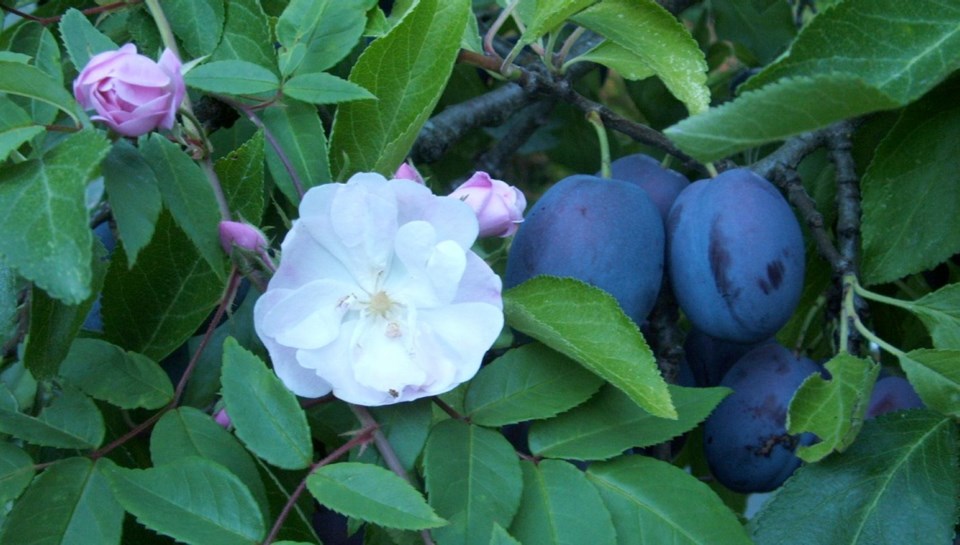As July comes to an end, I sense a change of direction in the garden: from creating to maintaining, sowing to reaping.
Not that planting is over entirely. Early August is good timing for sowing many salad vegetables — radishes, corn salad, spinach and other leafy greens such as the tangy mizuna, leaf radish, arugula and komatsuna (mustard spinach).
I aim to seed hardy fall and winter lettuces around Aug. 10. They can be thinned or transplanted in September and covered with plastic tunnelling or a portable cold frame during late fall and winter. Most garden centres will have fall and winter vegetable transplants in August.
If, for whatever reason, you do not want to fill empty spaces in the vegetable garden with cold season edibles, seed buckwheat, a fast-growing, warm-weather green manure crop that is chopped down and dug under as the plants begin to flower.
Late in the month, watch for the first flowerbulbs to come in. They usually begin with fall-flowering crocuses and the showy, large-flowered colchicums, which can appear at garden centres any time after mid-August.
Tomatoes. The fruits will be ripening on outdoor vines this month. To ensure that the already formed tomatoes have time to size up and ripen fully, around mid-month tip-prune staking (indeterminate) vines which, left unpruned, will keep on blooming and forming new fruits that won’t size up properly or ripen on the vines.
Look for the last formed fruit cluster and find the leaf-bearing stem right above it. Make the cut immediately above that leaf stem. The same pruning is helpful on winter squash and pumpkin plants.
For full flavour and optimum nutrition, pick and use tomatoes within five days of their turning red (or orange, or yellow, depending on the variety).
The treat I most look forward to with the first garden tomatoes of the season is a fresh (uncooked) sauce served over piping hot spaghetti or fettuccine. I use about three cups chopped, fully ripe, sun-warmed tomatoes mixed with one or two tablespoons of olive oil, minced sweet onion, fresh basil and thyme, and salt to taste. Sometimes, I add minced parsley. Pour the sauce over the pasta and top with shaved or grated parmesan.
I usually can at least a few quarts, with one teaspoon each of salt and sugar in each jar, for one of my favourite winter lunches: tomato soup. Heat home-canned tomatoes in a sauce pan, add milk or cream, and beat smooth with an immersion blender. Delicious.
In some years, when I am growing fewer tomato plants than usual, it often happens that just a few tomatoes ripen at a time. To preserve small numbers of tomatoes for the winter, I wash and dry them, and pop them whole into a freezer bag. This is an especially easy way to preserve cherry tomatoes, whose production so often exceeds one’s capacity for consuming them fresh.
In the winter, when I am making soup or a sauce, I simply open a bag and deliver the frozen tomatoes to the pot. I do not mind the skins in the soup, especially if it is to be treated with a hand blender. But for the more fastidious, dipping frozen tomatoes briefly into hot water readily loosens the skins for easy removal.
August reaping. Beans, cucumbers and zucchini are often plentiful in August. Harvest them young and keep the plants picked for a continuing harvest. Gather annual and perennial flowers for the house. Dahlias are flower factories in August. Cut the blooms to enjoy indoors when they are fully open.
Late in the month, when prune plums begin ripening, ensure optimum sweetness and flavour by picking only fully ripe plums, that is when they are all-purple, slightly softened, with little or no lingering tinges of red. One of the joys of home-grown fruit is that they don’t have to be picked partially ripe for shipping. We can savour our fruits and berries at their peak of flavour and nutrition.
Maintenance. In August, the garden begins to lose its fresh face in favour of a more “mature” look. To keep it tidy and in good health, dead-head annual and perennial flowers and pull weeds while they are young (before seeds are set and shed). Re-defining a tatty-edged bed spruces up its appearance.
Rhododendrons and camellias are forming next year’s flower buds. To foster fine flowering next spring, keep the plants watered. A deep watering once a week should do it.



